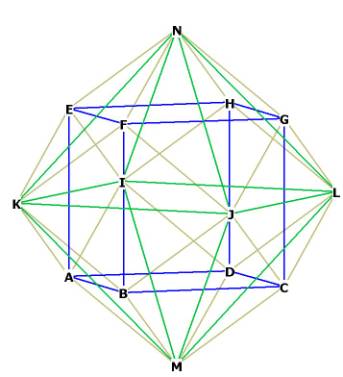|
(2019
midterm assignment) Model Midterm answers 2019 (Index) Essay 2: Start Research Report |
 |
Brandon Burrow
Whose Future is it Anyway?
Technology surrounds us. It is difficult to find a room
in the modern world that lacks a screen designed to grab our attention, ready to
swallow passers-by in a portal to the version of reality present in the
programming on display. Electronic devices are so convenient that we often do
not consider how our screen time affects our brains; the subliminal messaging
and inception of ideas not our own is covered by the hints of dopamine our
brains feed us to reward us for “interacting” with the world. Our perception of
time and events can be confused and drastically changed by media, as explored in
Jorge Luis Borges’s “The Garden of Forking Paths,” which features a book that
doubles as a labyrinth prompting the question, “What does a book (which was once
a new technology itself enabled by the printing press) that contains all pasts,
presents, and futures look like?” My answer is the internet/virtual reality, and
in this research report I will examine how technology and future literature
influences our perceptions of the world, allowing users/readers to create for
themselves their own pasts, presents, and futures and what these alternate
realities tell us about our society.
In Ready Player One, the main character, teenager Wade
Watts, lives in a world that is identifiably post-apocalyptic, as it is stricken
by climate change and a lack of resources that drives the masses into using an
alternate reality video game simulator known as the O.A.S.I.S as a form of
escapism. The plot of the novel centers on an Easter egg hunt for clues to solve
a puzzle left by Halliday, the reclusive inventor of the O.A.S.I.S, after his
death. Halliday was a lifelong gamer and thus, all the necessary keys to winning
the challenge can be found in the media that he considered to be part of his own
“canon” as the egg-hunter or “gunters” refer to it. Kids like Wade, as well as
adults and entire corporations, take part in the hunt, as the winner is to be
given control of the simulation’s future—which influences untold millions of
people—and riches beyond imagining. Inside the O.A.S.I.S, players can choose an
avatar of any race, gender, or species (if they prefer fantasy or sci-fi
characters from popular culture), that causes the “lines of distinction between
a person’s real identity and that of their avatar…to blur” (Cline 60). The
problem becomes one of how what Cline’s novel says about identity through the
introduction of Halliday’s canon and how the canon reproduces a specific
identity.
The identity that
Ready Player One’s Easter egg hunt seeks to replicate according to Megan
Amber Condis is that of a white male (16). Condis notes that, while “at first
glance, the founding of an alternative, popular cultural canon seems like a
great equalizer” since Halliday’s research content is widely available for free
or cheap, it quickly becomes apparent that Halliday’s “pop culture ‘syllabus’
embedded within Ready Player One
imagines the gaming subculture as almost exclusively white and male” (7, 9).
Halliday’s canon is based on the media that he enjoyed throughout his life, and
is meant to “essentially asks his fans to re-live his youth via his favorite
fiction, movies, television shows, comics, and video games in the hopes that
these experiences will shape their perspectives on gamer culture into something
that more or less resembles his own” (6). One of the challenges that Halliday
tasks gunters with is to play the role of a character in an interactive film
called a “flicksync” (Cline 108-12). The player must get every line of dialogue
correct, earning bonus points for using accurate inflection and veracious taking
on of the role, to progress in the hunt. The role chosen for the player is David
Lightman (Matthew Broderick’s character in the film
WarGames) (Cline 108). Condis notes
that “a successful playthrough…requires more than mere knowledge of plot or even
the scripted lines. [It] directly reward[s]
identification with the young,
straight, white male [protagonist]” of the film (12). Throughout the book,
knowledge is required of media that is overwhelmingly written or performed by
white males (Condis 9-10). The overall result of this according to Condis is
“how the embodiment of gaming subculture in the pop culture canon described by
the novel recreates the hierarchical structures of constructs like gender and
race” (16). Essentially, what on the surface seems like a heroic fight to keep
an online virtual reality technology free for people of all nationalities and
creeds requires the talents of only one identity that is shaped through
Halliday’s challenges.
The idea of reality being shaped by the vision of a
specific group is also explored in William Gibson’s “The Gernsback Continuum.”
The narrator begins seeing “semiotic ghosts. Fragments of the mass dream” of a
subset of Americans raised on pop culture (37). Architectural styles, inventions
from sci-fi movies, and impractical airplanes that the narrator recognizes as
incapable of flight pass by in front of him as he questions whether his reality
is his own. Travelling late at night he sees a vision of “a dream Tucson thrown
up out of the collective yearning of an era,” populated by “children of Dialta
Downes's `80- that-wasn't; they were Heirs to the Dream (49-50). The future he
sees is homogenous, representative of a “white, blond” and likely blue-eyed
peoples’ reality, and it is disorienting to him (50). When the narrator calls
his friend to relay his experience the prescription his friend offers is just to
go watch more TV, or in other words, to replace one fiction with another (57).
The narrator jumps between different visions of what the world
is based on what ideology is winning out in the mass conscious.
Another example of time being erratic can be found In
Jorge Luis Borges’s “The Garden of Forking Paths,” wherein the narrator is
searching for a book written by his ancestor that deals with the “abysmal
problem of time,” namely that for every moment and choice, an endlessly
branching future and past exist where each choice was chosen (49, 53). It is
revealed that the book itself is a labyrinth, a common model for how alternative
futures can work. Its forking paths symbolize “an infinite series of times, in a
growing, dizzying net of divergent, convergent and parallel” as it seeks to
embrace “all possibilities of time”
(53). Reality then becomes subjective, the choice an actor makes at an exact
moment colors his perceptions of reality. The narrator discovers this himself:
“Then I reflected that everything happens to a man precisely, precisely now.
Centuries of centuries and only in the present do things happen; countless men
in the air, on the face of the earth and the sea, and all that really is
happening is happening to me” (6). Those last words, “all the really is
happening is happening to me” can be chilling in the context of the digital age
where people can choose their information stream.
The modern user of technology, given the almighty power
to shape their own information diet and thus their own reality, can convince
themselves that they live in a branch of time unique to them, where only what
they perceive matters. As I continue this essay in the final exam, I will
analyze how different sources of information can craft isolated and specific
worldviews as people become locked inside an “echochamber” that serves as a
feedback loop reaffirming their own perceptions of the world.
Works Cited
Cline,
Ernest. Ready Player One.
Random House UK, 2016.
Condis, Megan Amber. “Playing the Game of Literature:
Ready Player One, the Ludic Novel, and the Geeky “Canon” of White Masculinity.”
Journal of Modern Literature, vol. 39,
no. 2, Winter 2016, pp. 1-19, 10.2979/jmodelite.39.2.01.
 |
 |
 |
